
A "Painted Park," Petrified Forest National Park / Rebecca Latson
When I designed the itinerary for my road trip move from Texas to Washington last summer, I worked on several different routes to take me to national parks I’d never photographed but which are still within a relatively straight shot to central Washington. No matter which route I planned, they all had one thing in common: a stop at Petrified Forest National Park in Arizona. Considered an “open-air geologic textbook” in a past Traveler article, Petrified Forest is a less-visited gem filled with all sorts of colorful photographic possibilities right off Interstate 40.

Painted Desert and Interstate 40, Petrified Forest National Park / Rebecca Latson

An ancient landscape, Petrified Forest National Park / Rebecca Latson
Summers in this park are hot and dry. Even getting out for short periods of time to photograph at each overview along the park road will parch you. Make sure you have plenty of water, a hat, and sunscreen. Take longer hikes either early in the morning, as soon as the park opens at 7 a.m. (summer hours), later in the afternoon, or before the park closes at 7:30 p.m. (summer hours).
In addition to being hot, Petrified Forest is also bright, from sky to ground. To keep from overexposing (blowing out) your composition in all that bright light, you’ll need to affix a polarizing filter (CPL or polarizer) to your lens, if you are an SLR user. You should also have available a lens hood to prevent flare spots, and a graduated neutral density (grad ND) filter so you can expose for the ground without blowing out the sky. An explanation of these filters can be found in a previous article I wrote for the Traveler a few years ago.
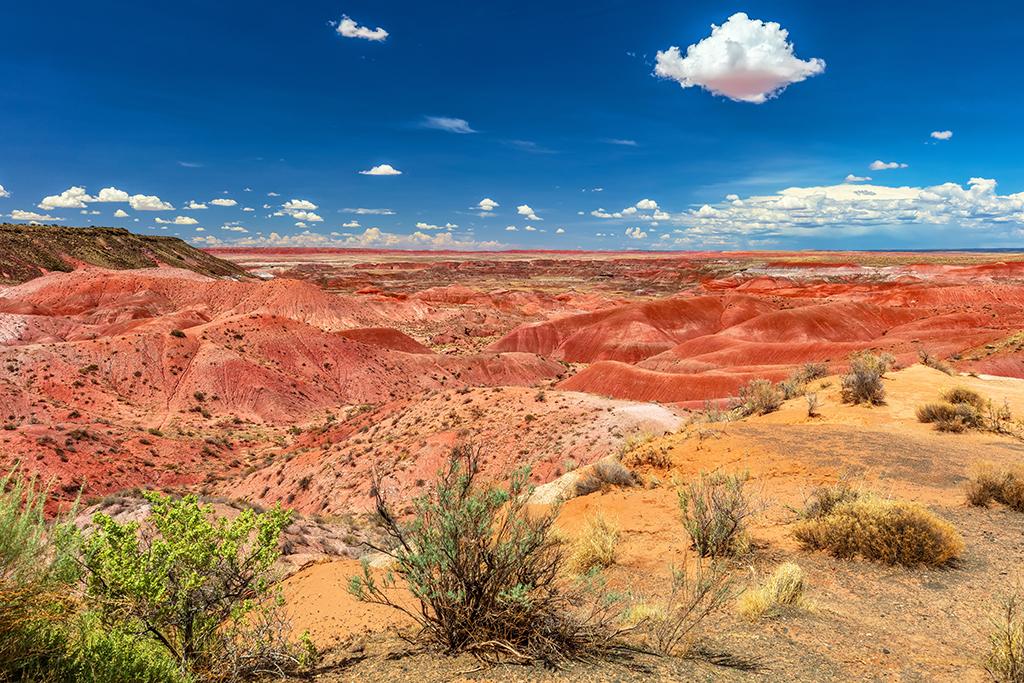
Painted Desert seen from Tiponi Point, Petrified Forest National Park / Rebecca Latson
Smartphone camera users, of whom I saw plenty during my trip, might want to use their in-camera or Instagram editing tools to tone down the brightness and bring out the scene’s color. The Jasper Forest image below was captured with my iPhone 8 after applying light and color saturation edits in-phone.

The view from Jasper Forest Overlook, Petrified Forest National Park / Rebecca Latson
If you enter the park via the Painted Desert exit off of Interstate 40, every single overlook of those brightly-saturated badlands leads to amazing photo ops. The red and orange colors are due to oxidized iron and manganese. During times when the ancient climate was moister, those same minerals added shades of blue and purple to the soil. Make sure to get both wide-angle and telephoto shots of the colorful formations and their layers. Like any other park, wide-angle landscapes tell the Big Picture, but the telephoto and macro close-ups flesh out the story.
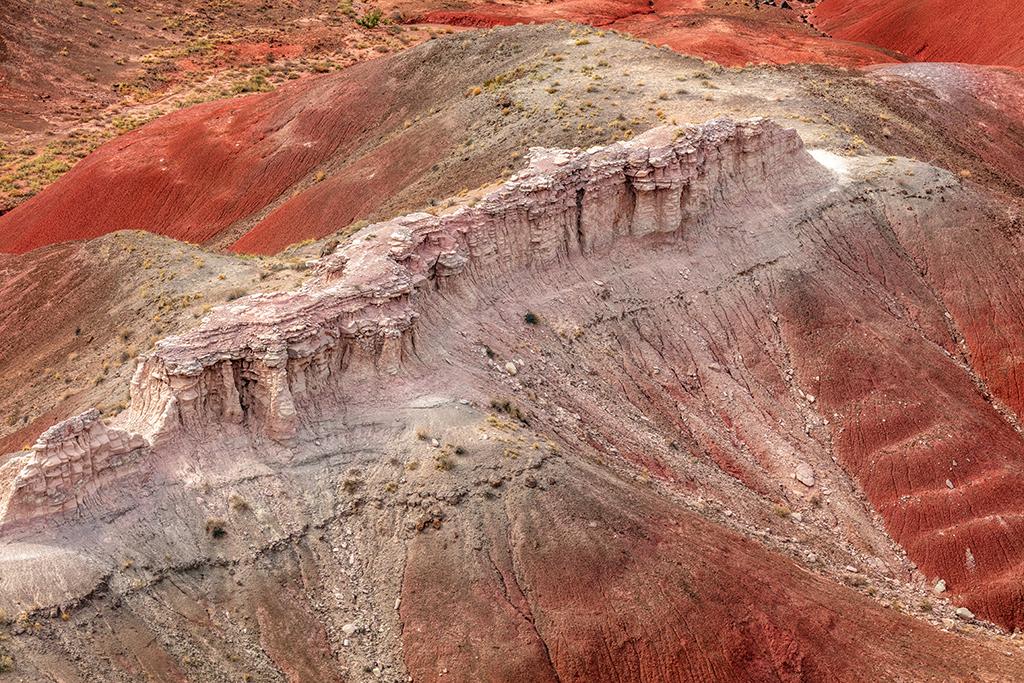
A telephoto landscape of Painted Desert, Petrified Forest National Park / Rebecca Latson
Stop at the Painted Desert Inn. Once a small inn during the 1920s, this national historic landmark now serves as a museum. Use parts of this building as natural frames for your Painted Desert scenery shots.
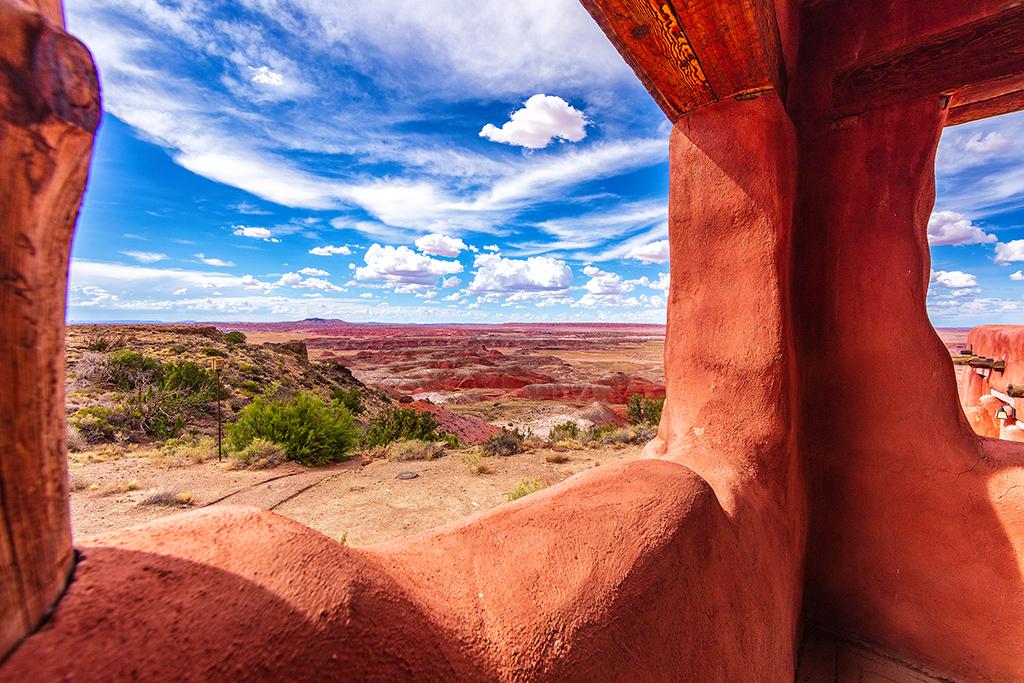
Framed by Painted Desert Inn architecture, Petrified Forest National Park / Rebecca Latson
While the north entrance leads directly to Painted Desert scenery, the southern entrance is where you will fill your camera’s viewfinder with beautifully-mineralized logs approximately 225 million years old, scattered all over this 146-square-mile national park. Trees? In this desert? Well, this entire area used to be a lush, swampy land populated with trees, plants, and animal life.

Colorful mineralization, Petrified Forest National Park / Rebecca Latson

A petrified log section, Petrified Forest National Park / Rebecca Latson
The petrified trees are the stars here. After the trees fell and were quickly buried, their organics were replaced by brilliantly colored silica. Log sections are profuse at such stops as Jasper Forest, the Crystal Forest Trail, and all along the Blue Mesa Trail.

A telephoto shot of jumbled petrified log sections, Petrified Forest National Park / Rebecca Latson

Petrified logs along Crystal Forest Trail, Petrified Forest National Park / Rebecca Latson

Blue Mesa erosion, Petrified Forest National Park / Rebecca Latson

Colorful petrified log sections, Petrified Forest National Park / Rebecca Latson
Stop off at the Rainbow Forest Museum and Visitor Center and take a walk along the trails around the buildings to view how truly large some of these petrified logs are, when found intact. Use a wide-angle lens like a 14mm or 16-35mm and move your camera up and down at different angles to see the interesting perspectives a lens like this gives to your compositions.

"Old Faithful," Petrified Forest National Park / Rebecca Latson
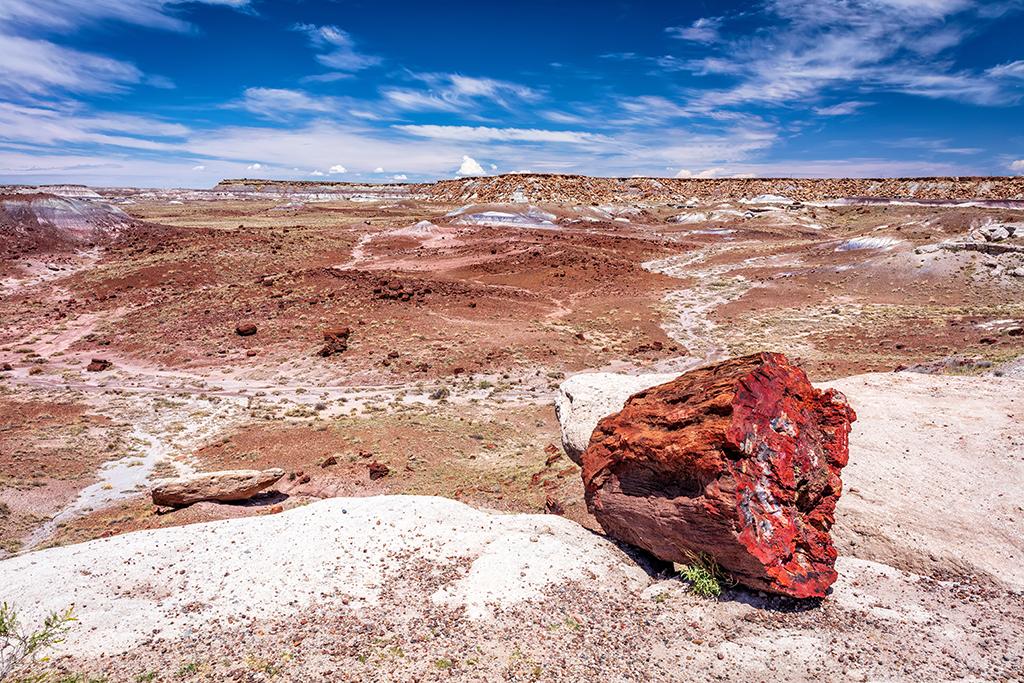
A wide-open view, Petrified Forest National Park / Rebecca Latson
Most of the paved trails within this park are under 2 miles in length with no scrambling involved. If you are looking for something a little lengthier, check out the “Off The Beaten Path” page on the NPS site for Petrified Forest. All along the trails are reminders of a much wetter era. Make sure you get a few photos of the hiking trail or path to the view area for leading line shots to move your audience's eye from one part of the composition to another. Include a few people, now and then, for a sense of scale and reference.

Taking a walk along the Blue Mesa Trail, Petrified Forest National Park / Rebecca Latson

Petrified logs along the Crystal Forest Trail, Petrified Forest National Park / Rebecca Latson

A shaded rest stop along The Crystal Forest Trail, Petrified Forest National Park / Rebecca Latson
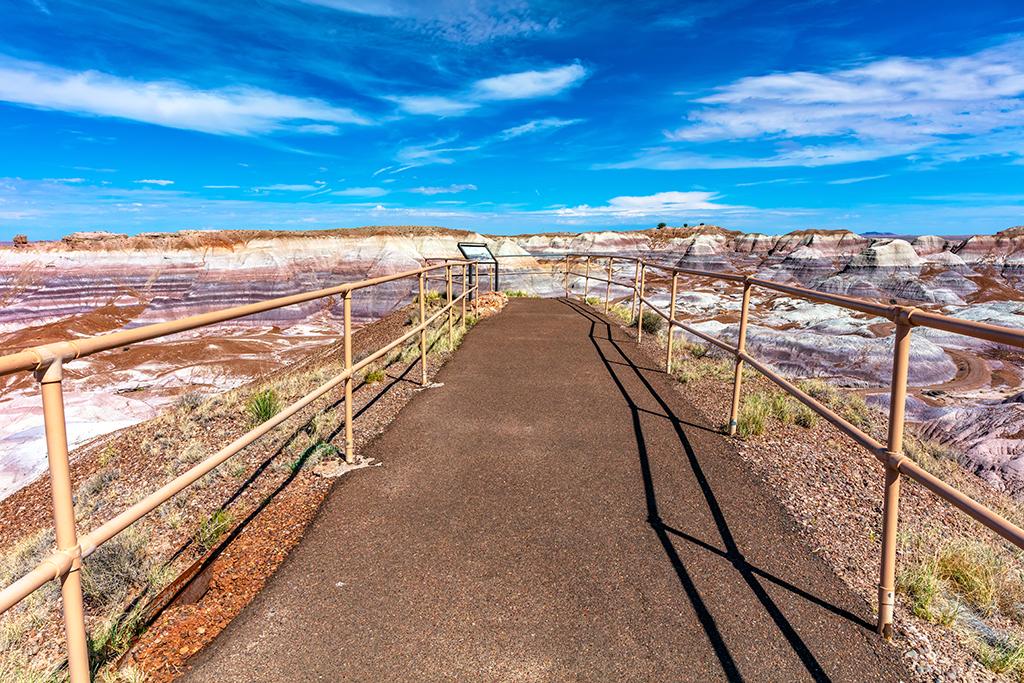
The Blue Mesa Trail Overlook, Petrified Forest National Park / Rebecca Latson

Blue Mesa geology, Petrified Forest National Park / Rebecca Latson
Look closely at those log sections. Can you see tree rings?

Petrified tree rings, Petrified Forest National Park / Rebecca Latson
The colorfully-layered landscape of “teepees,” mesas, and hillsides provide a feast for your eyes and your camera.

The Teepees, Petrified Forest National Park / Rebecca Latson

A Teepee, close-up, Petrified Forest National Park / Rebecca Latson
As you drive along the road, include that stretch of lined asphalt in your landscapes for some nice leading line shots. The road also adds a sense of the familiar to help orient your viewers’ focus.

The road through the park, Petrified Forest National Park / Rebecca Latson
While you are hiking around, make use of sagebrush, flowering bushes, and sections of petrified logs for foreground material to create a composition with more depth. To get everything in focus, you’ll want to use a wide-angle lens and set your aperture anywhere between f/9 and f/16. Or, you can take two shots of the same scene: one shot to focus on the close, foreground object, and another shot to focus on the landscape beyond. Then, you can use Adobe Photoshop, or a photo plug-in like Helicon Focus, to blend those two images into a single, in-focus shot. Or, you can stand at a distance, use your lens of choice, and then crop the image to create that foreground-to-background depth shot.

Foreground and background, Petrified Forest National Park / Rebecca Latson
Don’t forget to look around you, observe what you see, and photograph those non-landscape sights.

Just chillin' by the road, Petrified Forest National Park / Rebecca Latson

A summer shade of yellow, Petrified Forest National Park / Rebecca Latson
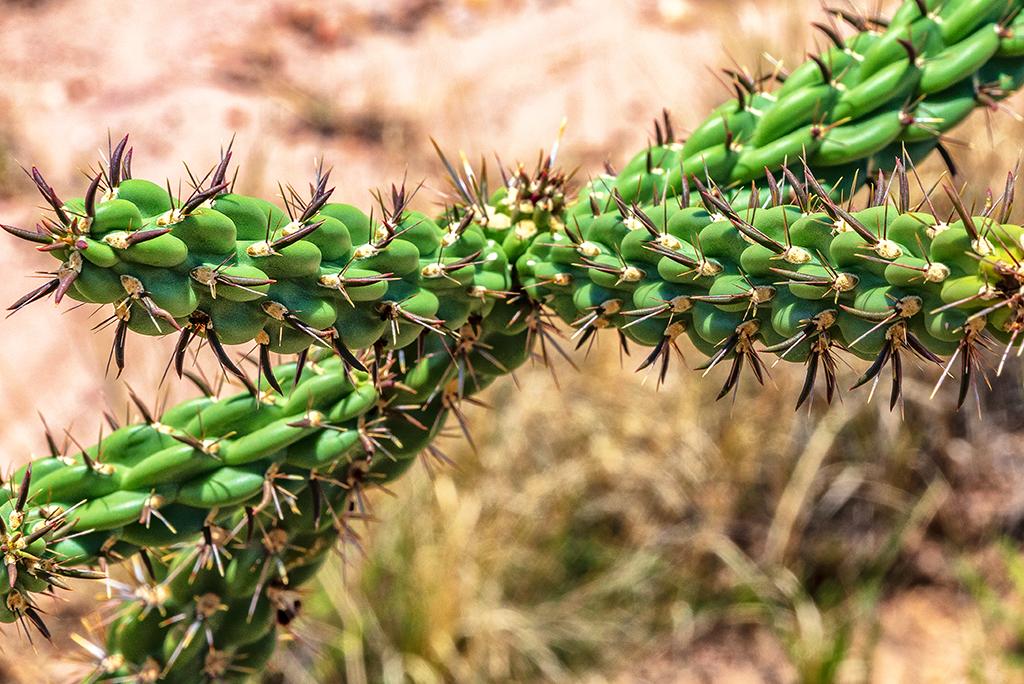
Thorny, Petrified Forest National Park / Rebecca Latson
Ancient people lived in this tough, arid land as well. You can see evidence left by the Ancestral Puebloans at the Newspaper Rock stop. You’ll need to use your telephoto lens or telephoto setting on your point-and-shoot camera, though, for close views of the petroglyphs covering the rock faces in this area. Don’t forget to change your camera settings, since the rocks bearing the petroglyphs are darker-colored than the rest of the surrounding scene. FYI, the difference between petroglyphs and pictographs is that petroglyphs were carved or chiseled into an exposed rock face while pictographs were painted onto the rock.
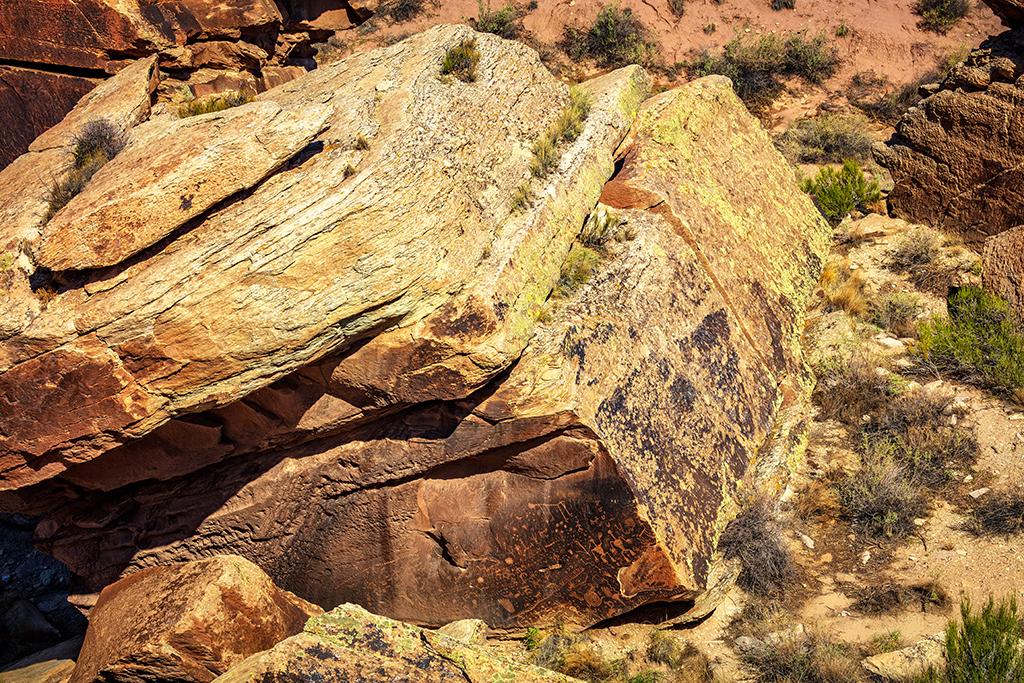
Newspaper Rock, Petrified Forest National Park / Rebecca Latson

A closer look at Newspaper Rock, Petrified Forest National Park / Rebecca Latson

Newspaper Rock from a slightly different angle, Petrified Forest National Park / Rebecca Latson
Stealing from this national park is still an issue. While these petrified log sections strewn around the ground may be calling your name to pick them up and pack them with you for a souvenir, remember that stealing from a national park is a federal crime. If you really want a colorful, polished reminder of your trip to this national park, there are legal sources such as the park concessionaire, the Fred Harvey Company (Xanterra). Better yet, just “collect” beautiful photographs of your experience in this less-visited geologic gem of a national park to show off to others. The “ooohs” and “ahhs” over your photos will be rewarding and you won’t have an extra knick-knack to dust off.
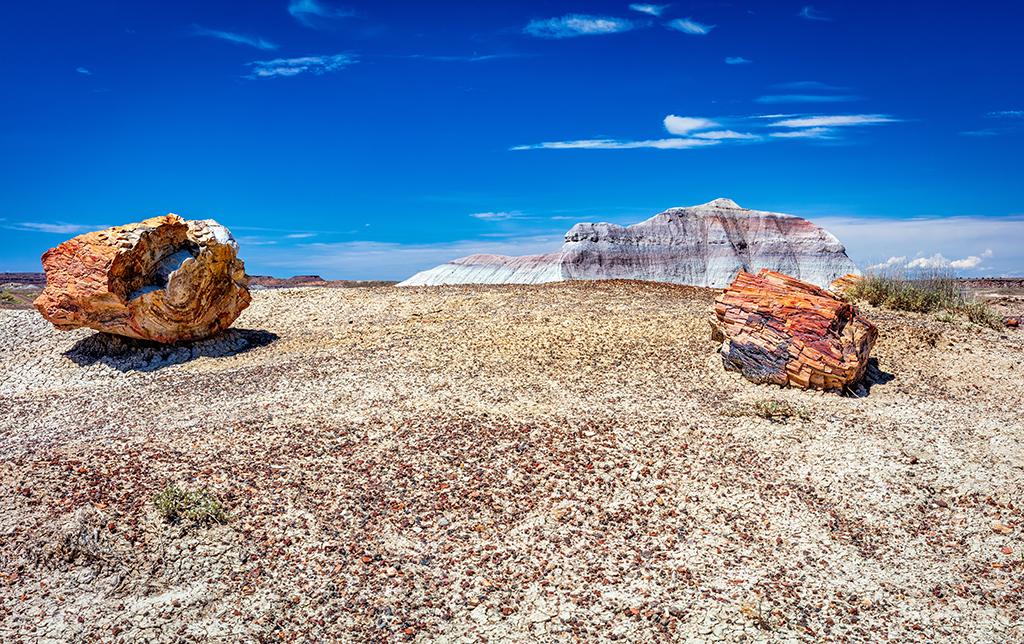
Layered and petrified, Petrified Forest National Park / Rebecca Latson

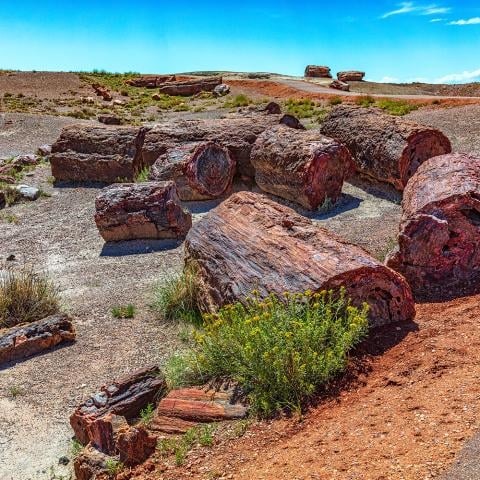
 Support Essential Coverage of Essential Places
Support Essential Coverage of Essential Places







Comments
it's a beautiful park, with lots of opportunities for interesting photos.
Beautiful photographs of a visually rich and amazing place.